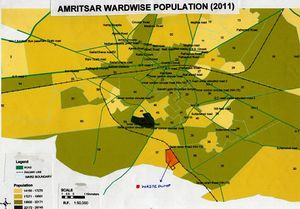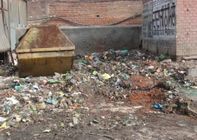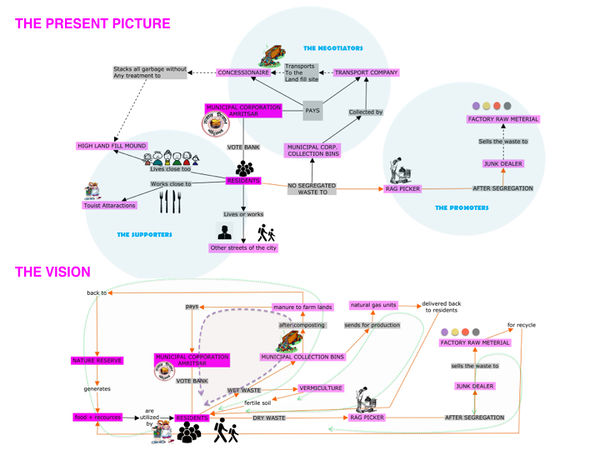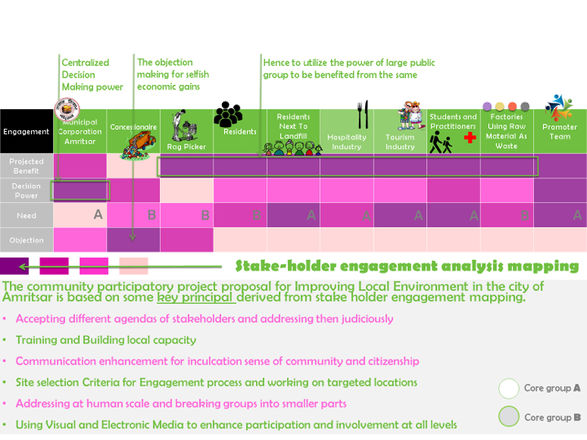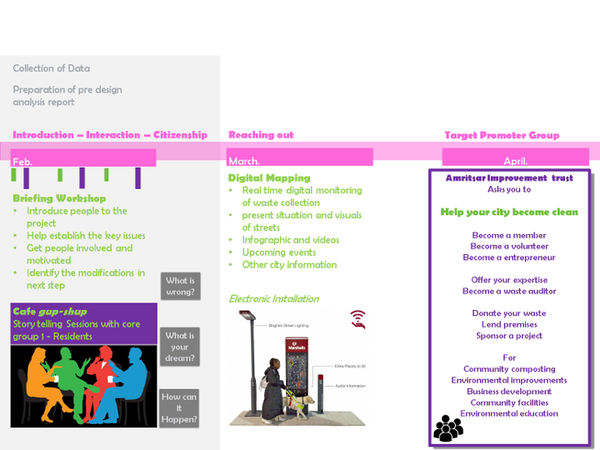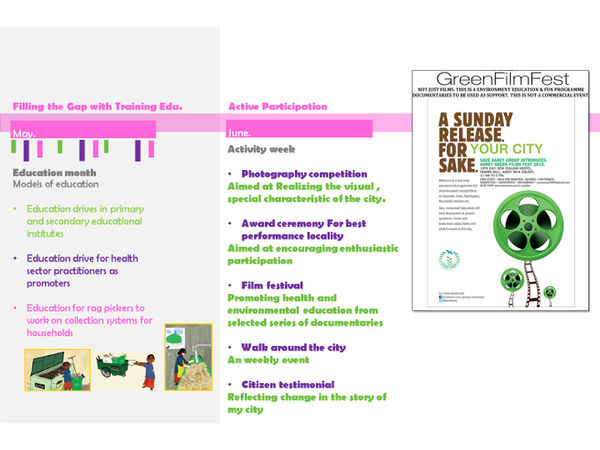Landscape Democracy 2015 Working Group C - Case Study 3
---> back to group page working group C
RETURNING SCAPE TO THE URBAN HERITAGE LAND
| Place name | Amritsar City | |
| Location | North India | |
| Country | India | |
| Author(s) | Stuti Sareen | |
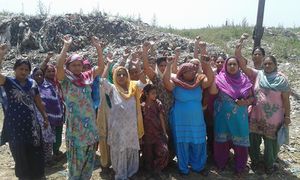
| ||
|
| ||
RATIONALE:
- The case of garbage, especially the domestic garbage has spoiled the rich urban landscape of the heritage city and thus has become one of the major cause of all ecological imbalances that prevail in 'urban' indian society today.
- Garbage process is not elaborate at the moment it starts with majorly informal and some formal collection practices and ends up majorly at horundes landfill sites near the residential areas in the city. Amritsar being the capital for Sikh religion (which counts for nearly 0.4% of the total world population) and having nearly 20,000 visitors everyday and shooting up to 100,000 on special occasions makes it important destination on the world map.
- The city of 1 million people is drowning into its own garbage and has been recorded on last in the intra-country class A cities, cleanliness ranking list. This is hazardously countering the basic human rights of healthy living as a community.
THE CASE OF CITY AMRITSAR GARBAGE PROBLEM
Solid waste management is the prime responsibility of the Municipal Corporation Amritsar involving collection, storage, segregation, transportation and disposal. In Amritsar urban limits, house to house collection of the solid waste is carried out through a number of sanitary workers deployed by the Municipal Corporation, payment of which is made on shared basis by Corporation. The total generation of solid waste in the city of Amritsar is estimated to be 600 tons per day (TPD). This large amount of solid waste generated is disposed off on the landfill site located outside Bhagtanwala.
Seeing the large amount of generation of solid waste in the city, Municipal Corporation of Amritsar has undertaken the project of Integrated Solid Waste Management Project under JNNURM to scientifically dispose off the solid waste. This MSW project is divided into two phases. The first phase of the project includes collection, segregation, storage and transportation of the municipal solid waste, which has been accorded to M/S Antony Waste Handling Cell, and the second phase of the project includes processing and disposal of solid waste, which has been allotted to M/S AKC Developer Limited, Noida. The first phase has been in operation since Feb ’09.
Garbage dumping along roadside
Solid waste comprises of waste generated from different sources. Major sources of generation are individuals, households, industries, trade and commerce, hotels and restaurants, healthcare institutions including dispensaries and hospitals, animals and floating populations in terms of tourists, hawkers, etc. Solid waste generated can be broadly classified into 4 categories i.e
- Organic Waste, which includes kitchen waste (food items), leaves, remains of
animals slaughtered, etc.,
- Recyclable Waste, which includes paper, plastic, glass, metal, rags, packing materials, twigs, bark, etc.,
- Inert Waste including bricks, cement, building debris, furniture waste, etc.
- Industrial Waste, which includes the byproducts.
In addition, large amount of waste is also generated by number of hospitals, dispensaries and other health care institutions, which are operational in the city. The current addition is E Waste generated from electronic products whose quantity is alarmingly increasing in the city. In terms of waste generated, organic waste comprises of more than half of the total waste whereas inert waste is more than 1/4 of the total waste generated. Industrial waste as well as recyclable waste comprises of approx 1/10th each of waste generated. There is no segregation of waste at the point of generation.
- please add any visual material to the gallery, videos can be placed below, you may add text as you like
- OBSERVATIONS
VIDEO REFRENCE FOR THE OBSERVATIONS IN DIFFERENT PARTS OF THE COUNTRY
Reflection
What are the major challenges for changing the situation?
- The below Graphic explains the present situation of garbage disposal in the city of amritsar. In the present scenario of economic greed the domestic and and the waste from hospitality industries has a blocked end in the land fill sites
- PRESENT AND VISIONED SCENARIO
What could be a starting point for democratically-based change?
- Please add approx. 150 words for each questions
- OBSERVATIONS
Stakeholder Mapping
Create a visual representation of the stakeholder groups that are involved in your case. Try to cover the following aspects in your representation: Power (high, medium, low) / Support (positive, neutral, negative)/ Influence (high or low)/ Need (strong, medium, weak)+ also map the relationships between the stakeholder groups
- Stakeholder Map
Change Scenario
Look at the various methods and tools available and think how they can be applied creatively. Think about the needs of different stakeholder groups - you may need a methodical mix to address them all. Visualize a scenario illustrating how these methods/tools can be applied within an imagined time frame
- Change Scenario
Cross cutting theme
Identify a cross-cutting theme/topic between the cases of your group and write a short reflection on it (approx. 150 words)
Concluding reflections
Reflect on your case and your change model. Potentials? Limitations? (approx. 150 words)
References
* Please make sure that you give proper references of all external resources used.
* Do not use images of which you do not hold the copyright.
* Please add internet links to other resources if necessary.
About categories: You can add more categories with this tag: "", add your categories
